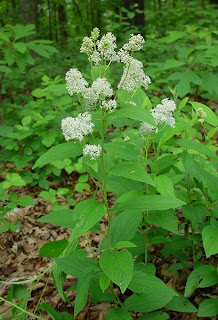WALNUT

Latin Name: Juglans regia
Alternate Names: English Walnut, Persian Walnut, Black Walnut
Family: JUGLANDACEAE
Parts Used: Leaves, outer rind of nut, nut, dried inner bark.
Properties: Alterative, Antifungal, Anti-inflammatory, Antiseptic, Astringent, Detergent, Hypoglycemic, Laxative, Purgative, Sudorific, Yang Tonic.
Internal Uses: Cancer, Candida, Constipation, Diarrhea, Dysentery, Eczema, High Cholesterol, Impetigo, Kidney Stones, Liver Stagnation, Parasites, Worms
Internal Applications: Tea, Tincture, Capsules.
Different parts of the plant have different properties, as follows. The bark is an alterative, antifungal, astringent, detergent, laxative, and purgative. The leaves are an alterative and anti-inflammatory. The nut is an anti-inflammatory and yang tonic. The rind is an antifungal and sudorific. All parts are an antiseptic and mildly hypoglycemic. Only the leaves are used for eczema, and only the nut is used for high cholesterol.
The plant helps rid one of protazoa parasites and tapeworm. The ellagic acid stimulates the central nervous system and has been used to help people recover from electric shock.
Different parts of the plant have different properties, as follows. The bark is an alterative, antifungal, astringent, detergent, laxative, and purgative. The leaves are an alterative and anti-inflammatory. The nut is an anti-inflammatory and yang tonic. The rind is an antifungal and sudorific. All parts are an antiseptic and mildly hypoglycemic. Only the leaves are used for eczema, and only the nut is used for high cholesterol.
The plant helps rid one of protazoa parasites and tapeworm. The ellagic acid stimulates the central nervous system and has been used to help people recover from electric shock.
Topical Uses: Athlete's Foot, Bed Bugs, Eczema, Fungal Infection, Headache, Heat Stroke, Herpes, Impetigo, Insect Repellent, Jock Itch, Leprosy, Ringworm, Tonsillitis, Wounds
Topical Applications: Crushed leaves can be rubbed on the body to repel insects. Wash, compress or poultice for wounds, eczema, impetigo and herpes, also to prevent bed bugs and even in some parts of the world to treat leprosy. Salve made from green hulls is excellent for fungal problems like ringworm, jock itch and athlete's foot. Gargle for tonsillitis. Walnut leaves and shells were once used to color hair dark. The leaves have been worn as a crown to prevent headaches or heatstroke. Walnut oil is used in soap production and to make non-drying paint. The wood has long been used for furniture.
Culinary uses: Ripening nuts can be pickled. Walnuts may be eaten raw or toasted. They can be added to salads, stir fries and baked goods. Walnut oil is used in cooking and for salads. A delicious syrup, similar to maple syrup, can be made from the sap.
Energetics: Bitter, Warm, Dry, Cool.
Chemical Constituents: Leaves contain naphthaquinones (juglon), tannins, ellagic acid, gallic acid, flavonoids, inositol, essential oils. Nuts are rich in essential fatty acids (linoeic and linolenic), vitamin C, manganese.
Comments: Only the green hull is cooling.
The genus name Juglans or jovis glans means 'Jupiter's nut.' Mythology tells that gods residing on earth lived off Walnuts. The name Walnut is from the Teutonic welsche nuss, meaning 'foreign nut'. Because Walnuts are similar to the shape of the head, they have been thought to benefit the brain. In Asian medicine, Walnuts are regarded as a kidney tonic, which makes sense as they consider the brain to be governed by the kidneys. Walnuts have been carried as a charm for fertility. Walnut as a flower essence is for transitions such as job changes, moving or menopause.
The common name Walnut includes the species Juglans regia (Black Walnut) which is used interchangeably with Juglans nigra (English Walnut, Persian Walnut).
The genus name Juglans or jovis glans means 'Jupiter's nut.' Mythology tells that gods residing on earth lived off Walnuts. The name Walnut is from the Teutonic welsche nuss, meaning 'foreign nut'. Because Walnuts are similar to the shape of the head, they have been thought to benefit the brain. In Asian medicine, Walnuts are regarded as a kidney tonic, which makes sense as they consider the brain to be governed by the kidneys. Walnuts have been carried as a charm for fertility. Walnut as a flower essence is for transitions such as job changes, moving or menopause.
The common name Walnut includes the species Juglans regia (Black Walnut) which is used interchangeably with Juglans nigra (English Walnut, Persian Walnut).

